French Riviera: places to photograph between Monaco and Saint-Tropez, architecture and Mediterranean gardens
The French Riviera between Monaco and Saint-Tropez features a diverse architectural heritage reflecting centuries of history. Visitors can explore medieval villages such as the historic center of Grasse, known as the perfume capital since the 16th century, or Saint-Paul-de-Vence, home to the Maeght Foundation and its modern art collection. The region also has Belle Époque buildings like the Negresco Hotel in Nice, along with 20th-century architectural creations such as the Palais Bulles in Théoule-sur-Mer. Mediterranean gardens are another attraction along this coastal area. The Villa Ephrussi de Rothschild in Saint-Jean-Cap-Ferrat has nine themed gardens with vegetation suited to the local climate. The Bastide du Roy in Antibes preserves its geometric gardens and century-old olive trees. The coastline offers several vantage points overlooking the Mediterranean Sea, notably from the Le Corbusier Promenade connecting Cap Martin to Monaco over two miles, or from coves like Coco Beach where rocks and pebbles enable swimming and marine life observation.
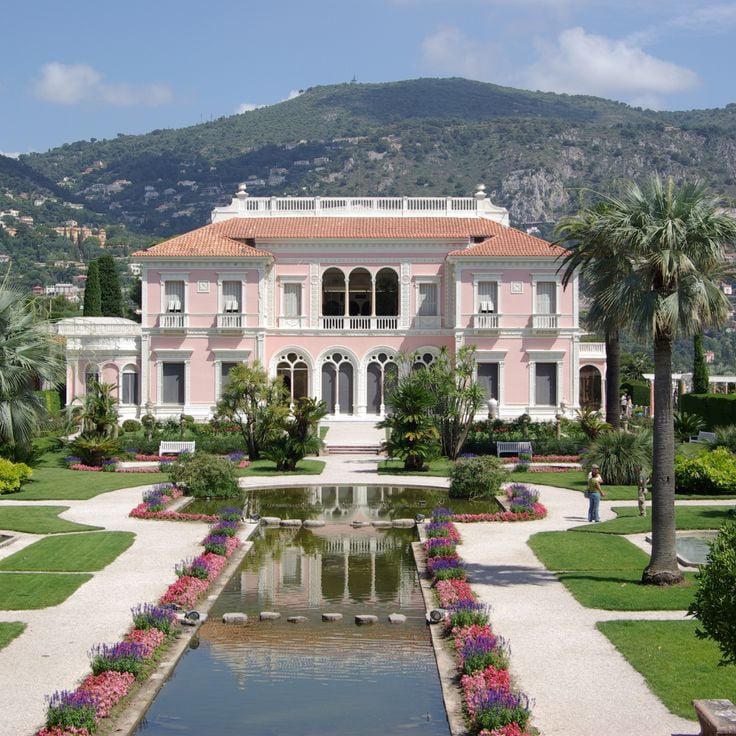
Saint-Jean-Cap-Ferrat, France
Villa Ephrussi de RothschildThe Villa Ephrussi de Rothschild features nine themed gardens on the peninsula of Saint-Jean-Cap-Ferrat. Built between 1905 and 1912 by Baroness Béatrice Ephrussi de Rothschild, this pink residence houses a collection of artworks and furnishings. The nine gardens include a French formal garden in the central section, a Spanish garden with water features, a Florentine garden with marble fountains, and a Japanese garden with bridges and exotic plants. The estate spans approximately 42 acres (17 hectares) and offers views over the bay of Villefranche and Cap Ferrat.
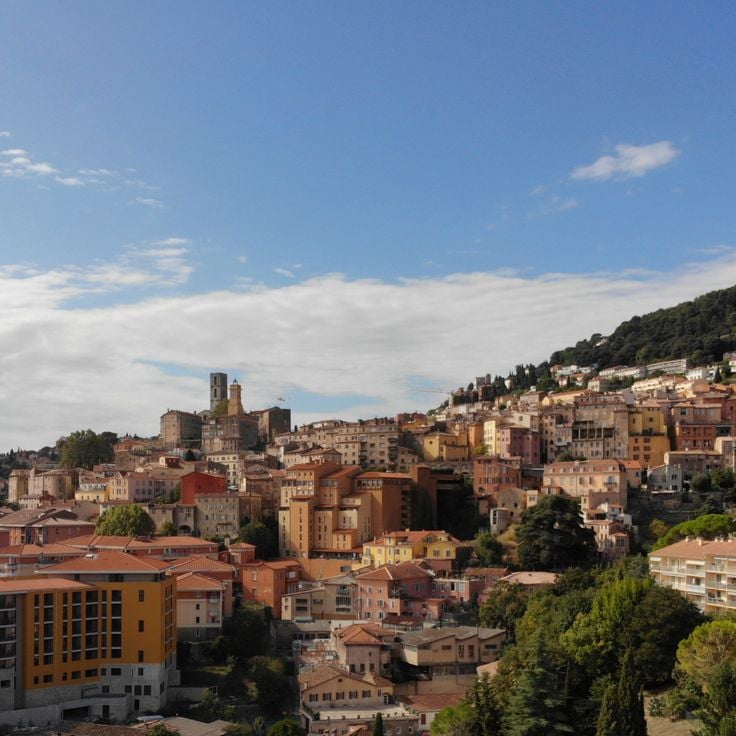
Grasse, France
Old Town of GrasseThe old town of Grasse is a medieval urban center that has specialized in perfume manufacturing since the 16th century. This historic quarter includes narrow streets, buildings from different periods, and traditional perfume factories that remain in operation. The architecture reflects the evolution of the town from the Middle Ages through the prosperous era of the perfume industry. The historic production facilities can be visited, and the medieval urban layout follows the terrain of the hillside.

Nice, France
Hotel NegrescoThe Hotel Negresco is a white Belle Époque building from 1913 with a pink dome on the Promenade des Anglais. The facade displays the characteristic features of early 20th-century architecture on the Côte d'Azur, while the visible dome marks the building along the Nice seafront promenade and provides a reference point for architectural documentation between Monaco and Saint-Tropez.
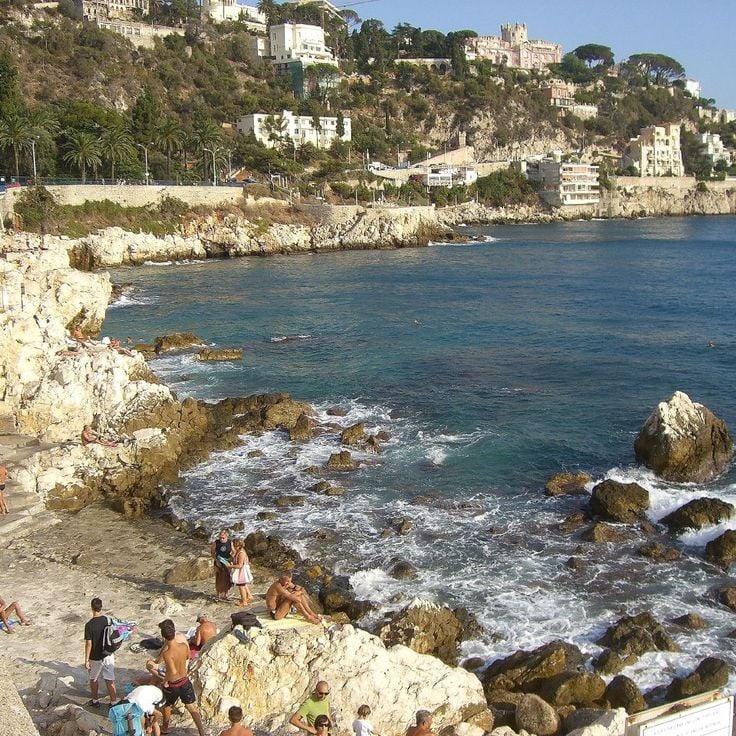
Nice, France
Coco BeachThis small bay in eastern Nice features a rocky shoreline with a pebble beach suitable for swimming and snorkeling. The underwater landscape of Coco Beach with its rock formations and the sheltered location of the bay make it a popular spot for observing marine flora and fauna. Access is via pedestrian paths along the coast where several similar swimming areas can be found.
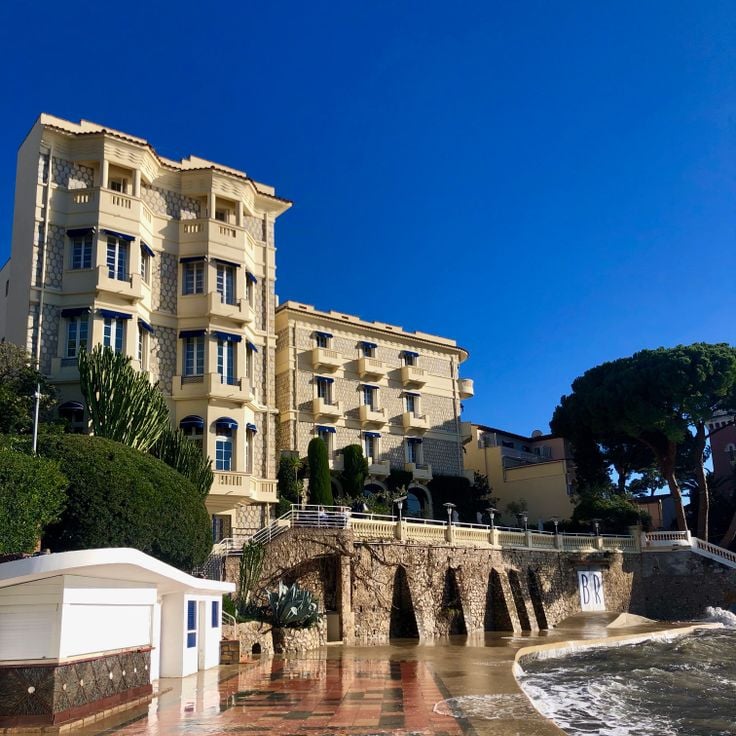
Juan-les-Pins, France
Hotel Belles RivesHôtel Belles Rives is a 1929 building on the beach at Juan-les-Pins, converted from the former residence of American writer F. Scott Fitzgerald. The architecture displays Art Deco elements from the original design with rectangular windows and geometric decorative details on the facade. The structure stands among examples of interwar period architecture along the French Mediterranean coast between Monaco and Saint-Tropez.

Nice, France
Place MassenaPlace Masséna forms the central plaza of Nice with its Italian-inspired architecture, characterized by red facades and geometric checkerboard floor mosaics. The square connects the historic old town with the modern districts of the city and has served as a major gathering place since its 19th-century design. The neoclassical buildings frame the expansive space, while black and white marble mosaics cover the ground. Seven illuminated statues on tall poles mark the northern side of the square and were created in 2007 by Catalan artist Jaume Plensa.
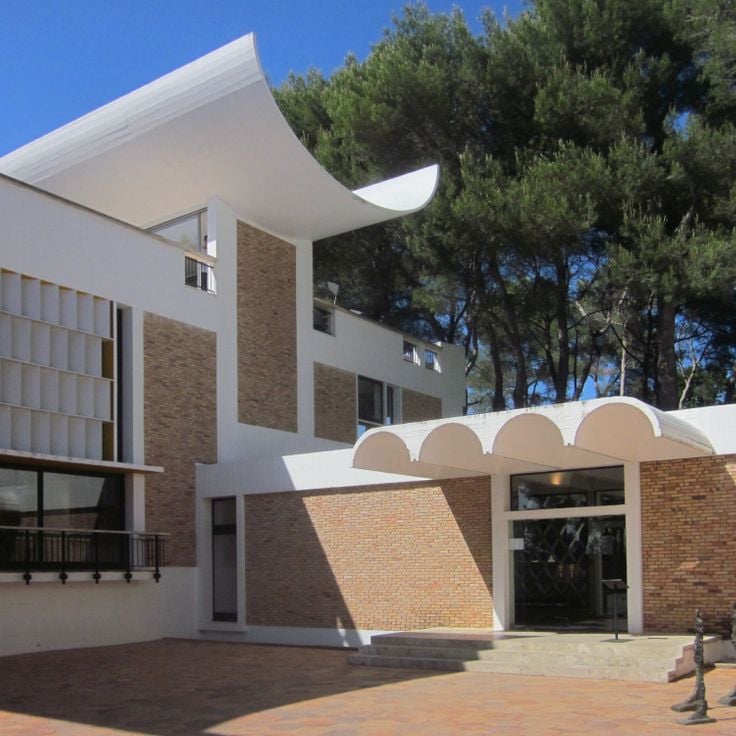
Saint-Paul-de-Vence, France
Maeght FoundationThe Fondation Maeght was established in 1964 by art dealer Aimé Maeght and his wife Marguerite. This museum houses more than 13,000 works of modern and contemporary art, including paintings, sculptures, and prints by artists such as Joan Miró, Marc Chagall, and Alberto Giacometti. The complex includes several exhibition halls, a sculpture garden featuring works by Alexander Calder and Jean Arp, and a library dedicated to 20th-century art history. The architecture by Catalan architect Josep Lluís Sert integrates the buildings into the Provençal landscape through the use of terraces and courtyards.
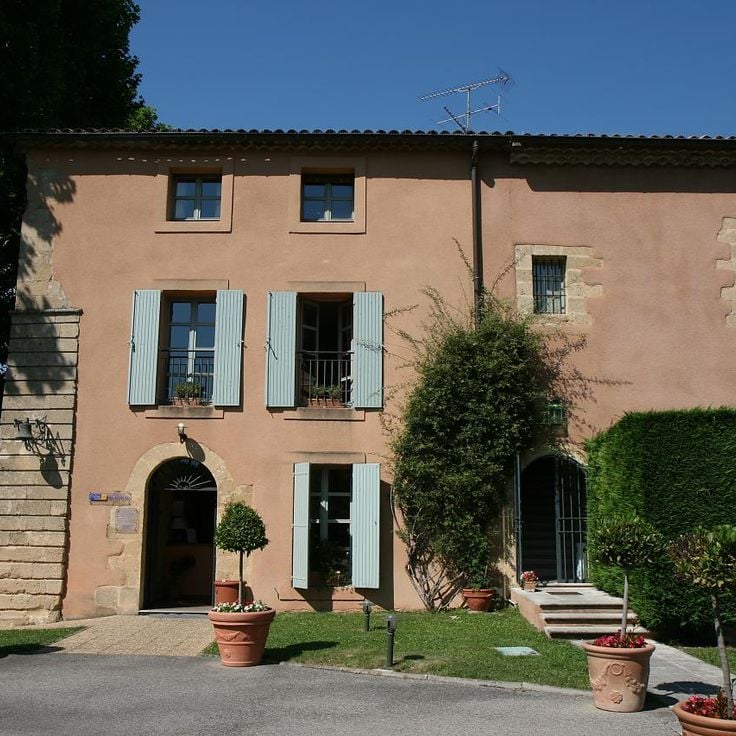
Antibes, France
Bastide du RoyThis Bastide du Roy in Antibes extends across four hectares (10 acres) and preserves its geometric gardens and centuries-old olive trees from the Renaissance period. The estate includes a 16th-century irrigation system that supplies the plant life throughout the property.

Théoule-sur-Mer, France
Palais BullesThis building consists of interconnected spheres and was designed by architect Antti Lovag. The complex includes terraces, a pool, and an amphitheater integrated into the coastal landscape above Cannes. Palais Bulles was completed during the 1970s and 1980s and follows the principles of organic architecture without right angles. The curved forms and white appearance characterize this architectural example of the 20th century, which is occasionally used for events.
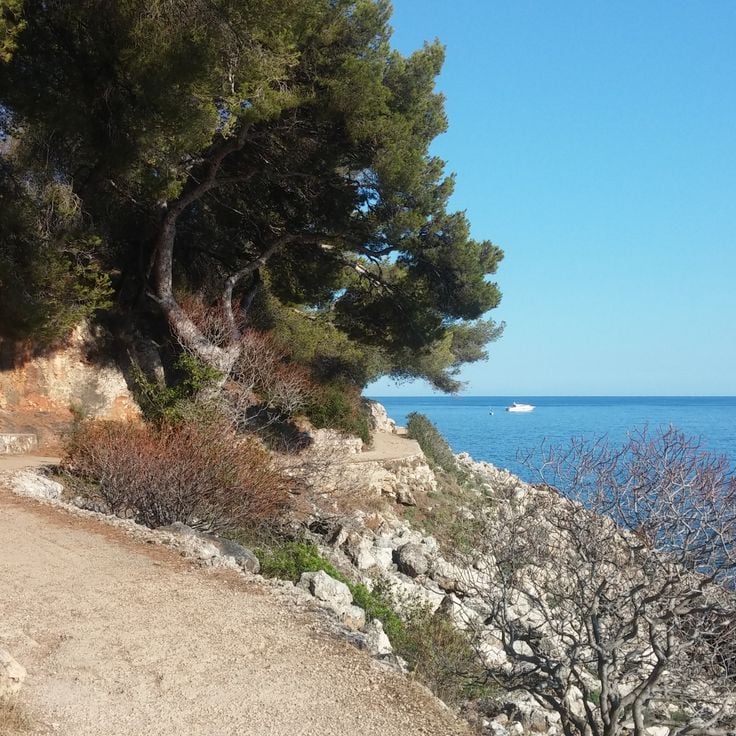
Roquebrune-Cap-Martin, France
Promenade Le CorbusierThe Promenade Le Corbusier is a 1.2-mile (2-kilometer) coastal path connecting Cap Martin to Monaco, offering views of the Mediterranean Sea. The path follows the rocky coastline and provides access to several coves. The route is named after architect Le Corbusier, who drowned while swimming along this section of coast in 1965. The path is partially carved into the rock and runs between the coastal road and the sea. Along the route, several viewpoints overlook the coastline and offshore cliffs.
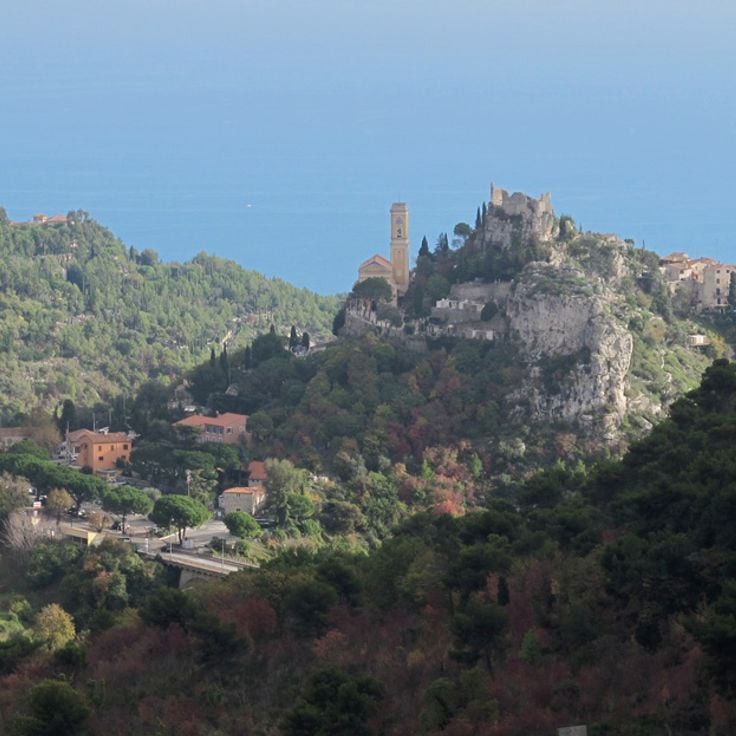
Èze, France
Eze VillageThis medieval village from the 12th century sits on a rocky outcrop above the coast between Monaco and Nice. Stone buildings cluster along narrow streets that lead to the Jardin Exotique, a botanical garden on the site of the former castle. The remains of the medieval fortifications offer views of the coastline and Mediterranean Sea. The architecture preserves the character of a Provençal settlement with restored houses built from local stone.
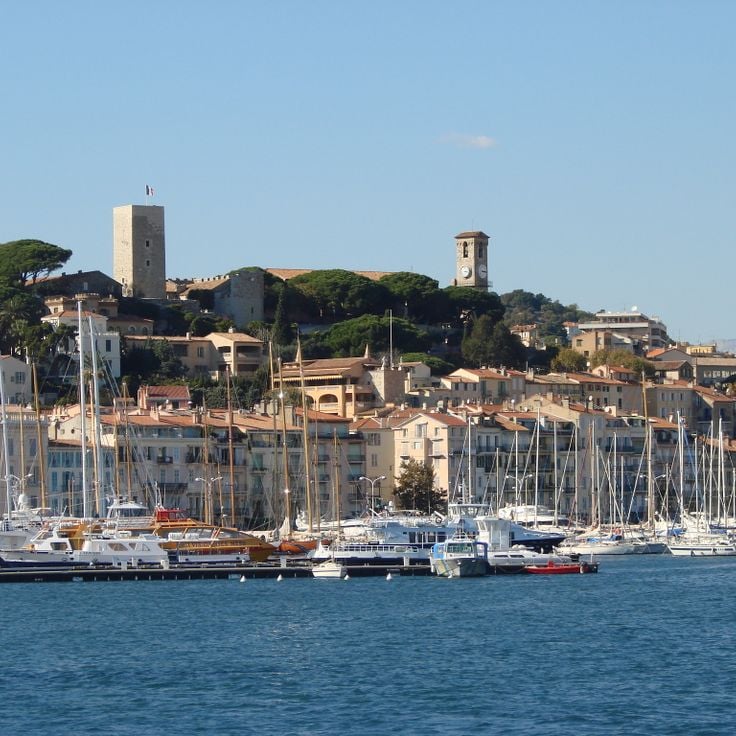
Cannes, France
Le SuquetLe Suquet rises on a hill in Cannes and forms the medieval old town of this Côte d'Azur city. This historic district preserves narrow, cobblestone streets that wind up the slope and lead to buildings from various centuries. The Musée de la Castre occupies a former monastery from the eleventh century and presents archaeological and ethnographic collections. The Notre Dame d'Espérance church dates from the sixteenth and seventeenth centuries and serves as the religious center of this district. From various points in Le Suquet, views extend over the Bay of Cannes and the surrounding neighborhoods.
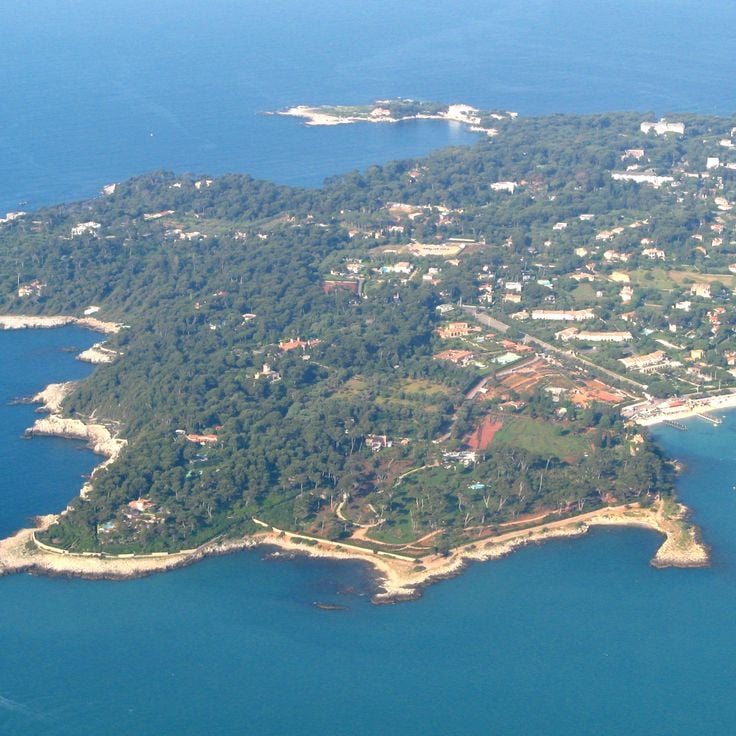
Antibes, France
Cap d'AntibesThe Cap d'Antibes peninsula extends into the Mediterranean Sea south of Antibes and preserves its villa architecture from the 19th and 20th centuries. A coastal path, the Sentier du Littoral, runs along the rocky shoreline and provides views of the mansions with their pine trees and of the harbor with its sailboats. The path connects several coves with pebble beaches and passes by Villa Eilenroc, which now houses a museum. The vegetation consists of Aleppo pines, holm oaks, and Mediterranean shrubs such as rock roses and myrtles, adapted to the dry summer climate.
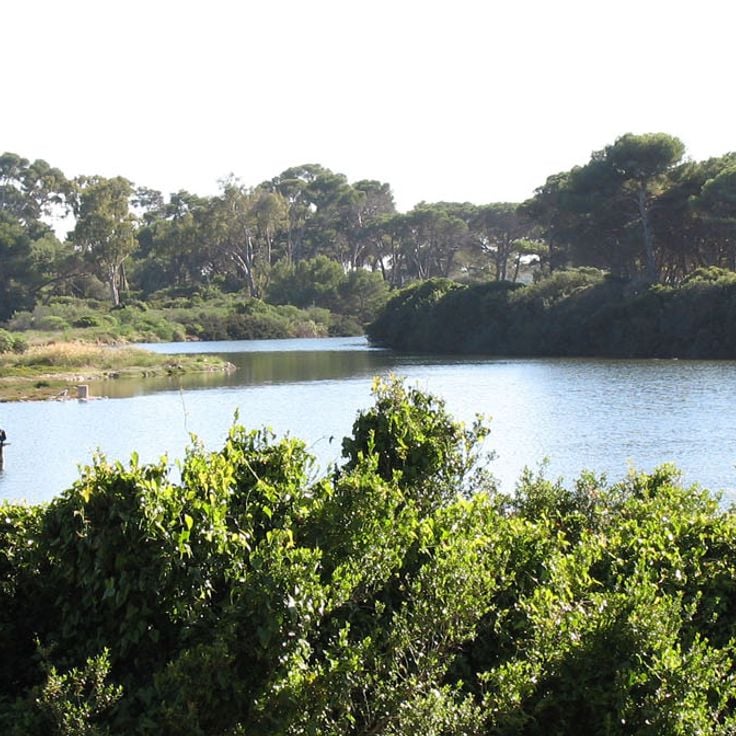
Cannes, France
Sainte Marguerite IslandÎle Sainte-Marguerite offers public forest trails that wind between pine and eucalyptus trees alongside a historic stone fortress. This island off the coast of Cannes is part of the Lérins Islands and combines natural landscapes with historic heritage. The 17th-century Fort Royal, known as the former prison of the Man in the Iron Mask, stands on the northern shore and provides insight into the region's military architecture. The forest trails extend for several miles through Mediterranean vegetation including Aleppo pines, eucalyptus trees, and holm oaks, while small coves along the coastline offer opportunities for swimming and observing the clear sea waters.
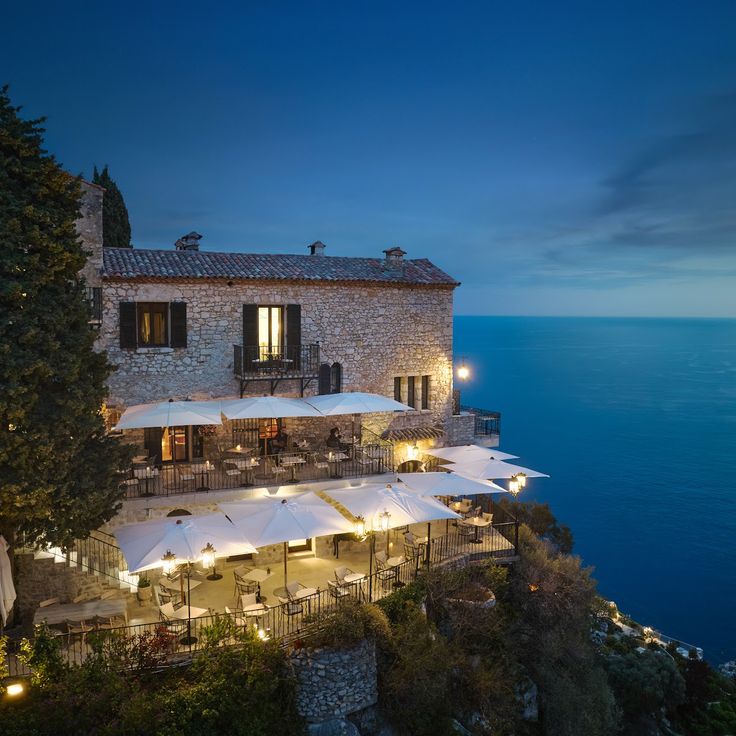
Èze, France
Château EzaChâteau Eza in Èze is a medieval stone structure that now operates as a hotel and restaurant. This château stands on a coastal cliff and retains its historic architecture while adapted for hospitality use. From the property, views extend across the Mediterranean Sea and the surrounding coastline. The location of Château Eza demonstrates the adaptive reuse of historical buildings along the Côte d'Azur.
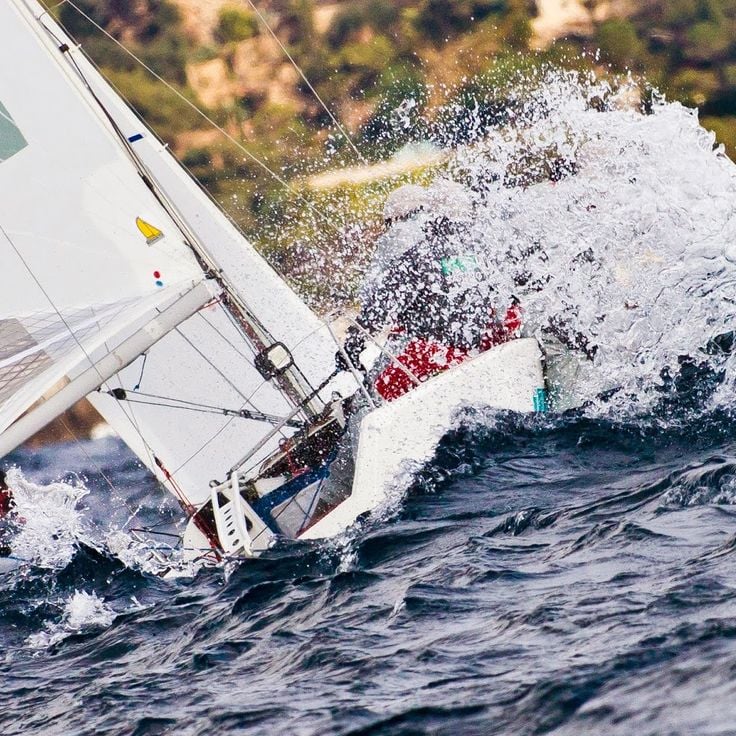
Monaco
Les Yachts de MonacoThe yachts of Monaco are moored at Port Hercule, a natural harbor providing berths for approximately 700 boats. These yachts form part of the principality's coastal landscape and range from private vessels to commercial ships of various sizes. The centrally located harbor offers views of the surrounding Monte Carlo architecture and the coastline of the principality. As a primary mooring point, Port Hercule provides access to adjacent urban districts and documents Monaco's maritime history since the 19th century.
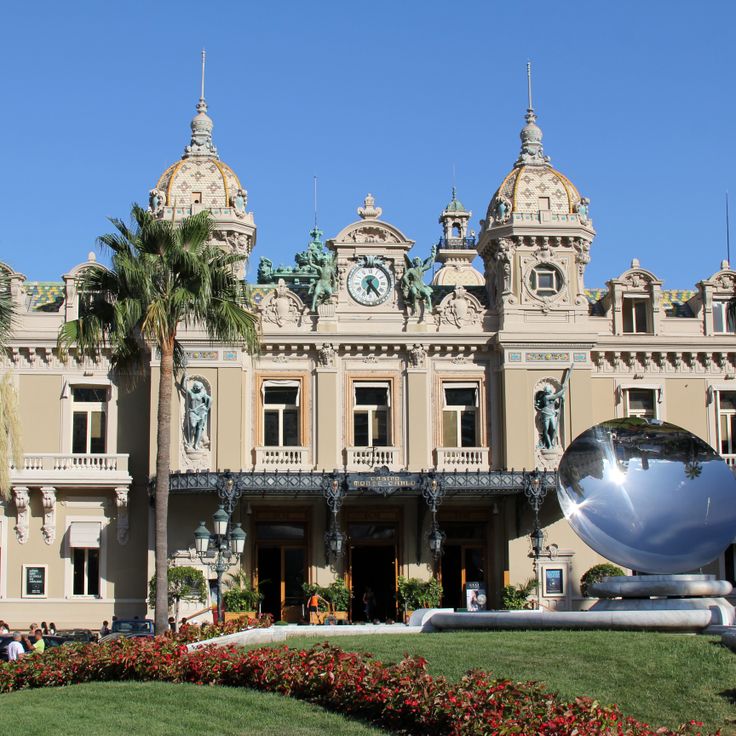
Monte-Carlo, Monaco
Casino de Monte-CarloThe Casino de Monte-Carlo was built in 1863 and brings together gaming rooms, frescoes, marble columns, and crystal chandeliers in its Belle Époque building. The architecture of this structure presents the characteristics of the era with ornamental facades and interiors located directly on the Mediterranean coast.
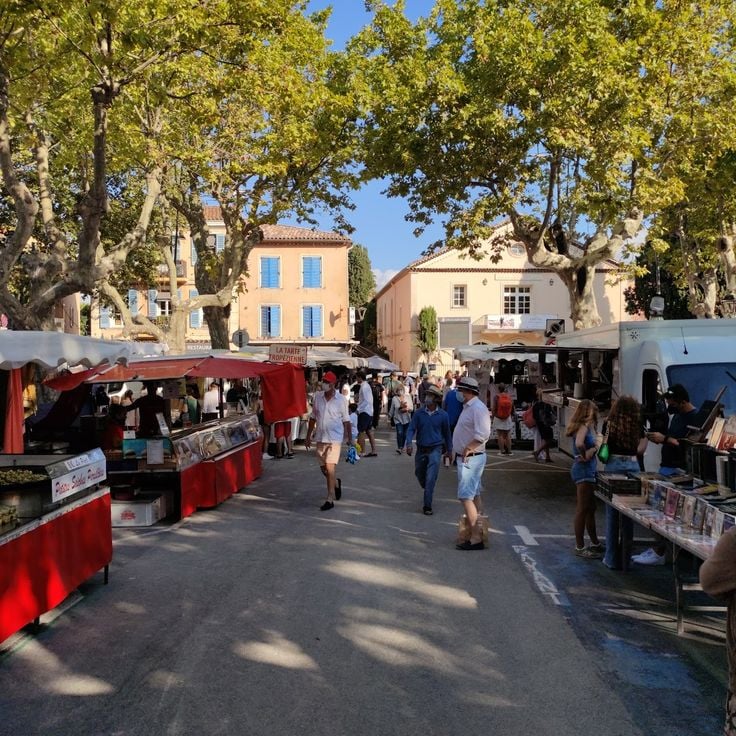
Saint-Tropez, France
Place des Lices MarketThis Provençal market operates on Tuesdays and Saturdays at Place des Lices in Saint-Tropez. Vendors offer vegetables, fruits, flowers, fish, cheese, and regional products under plane trees. The market has served for decades as a gathering place for locals and visitors seeking fresh produce from the region. The market stalls extend across the entire square, which is shaded by trees and plays a central role in the daily life of the town.
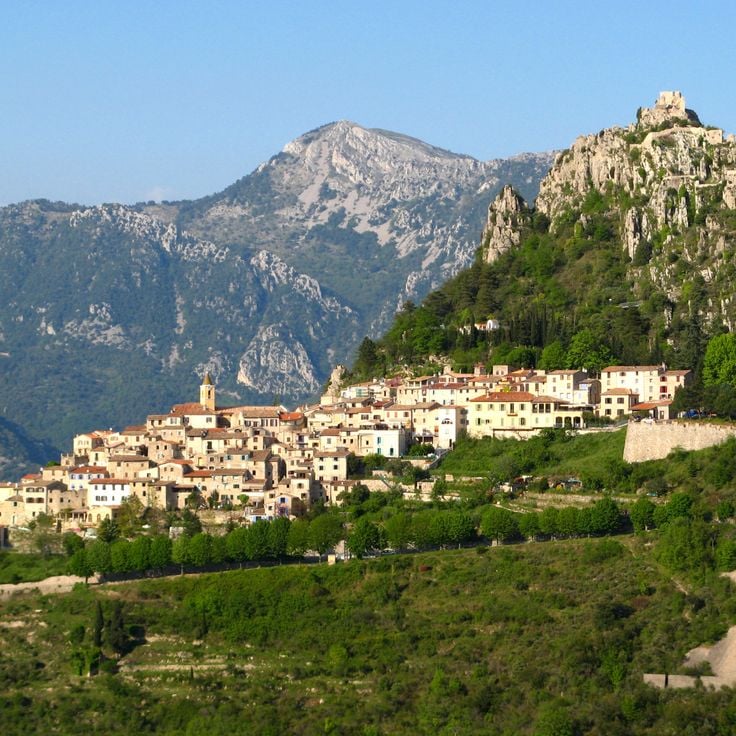
Sainte-Agnès, France
Sainte-Agnès VillageThe stone village of Sainte-Agnès sits at an elevation of 2,625 feet (800 meters) and preserves its paved streets and a 20th-century military fort. The location in the southern Alps provides views of the Mediterranean coast extending to Italy, while the historic buildings demonstrate adaptation to the mountain terrain.
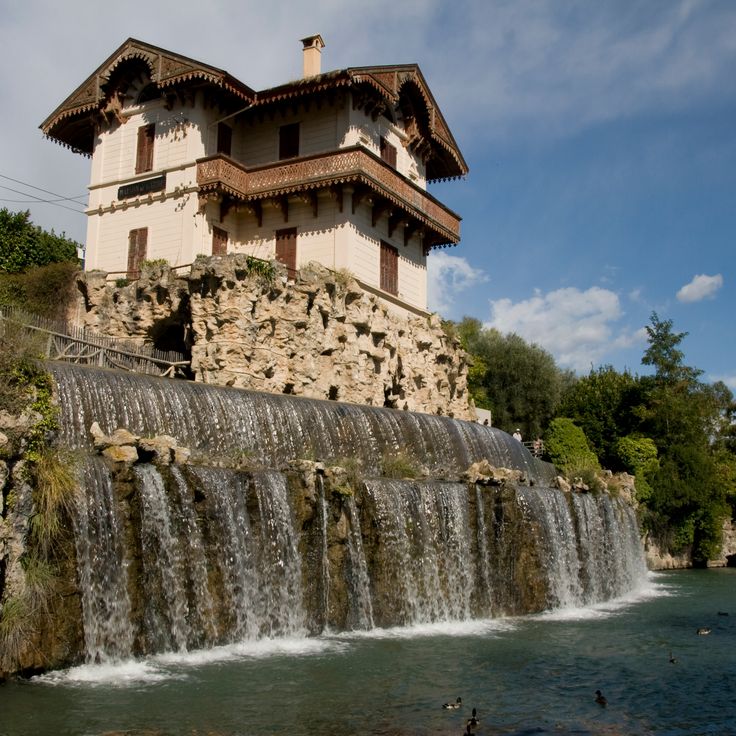
Nice, France
Cascade de GairautThe Cascade de Gairaut is a 19th-century hydraulic monument in northern Nice, built as part of the expansion of the city's water supply system. The structure consists of stone terraces, sculptural elements, and water basins arranged across multiple levels. Today, this facility serves as a viewing area overlooking Nice, the Mediterranean bay, and the surrounding hills of the Provence-Alpes-Côte d'Azur region. The Cascade de Gairaut combines functional water architecture with decorative design elements and is located near historic olive groves and Mediterranean vegetation.
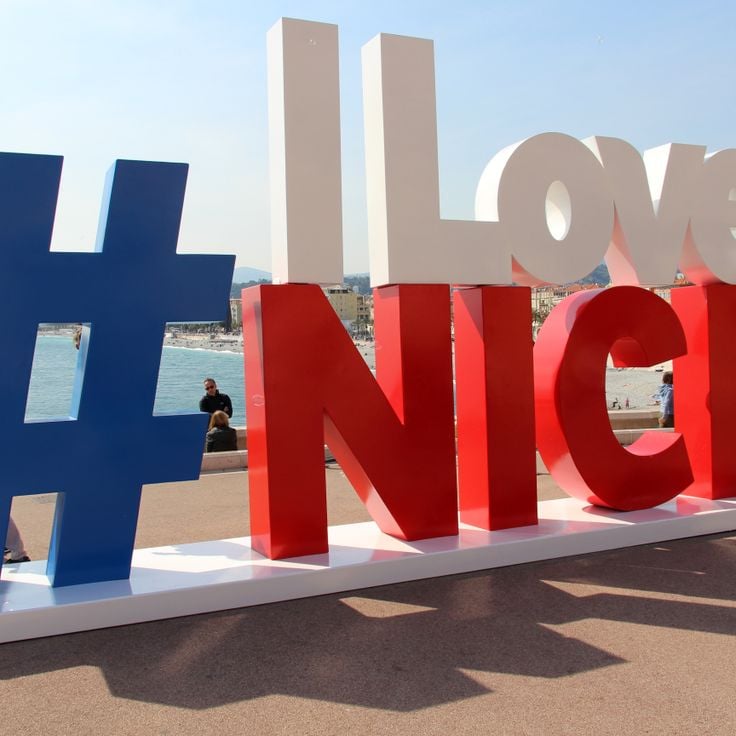
Nice, France
Nice SignThis metal sign spelling NICE stands on Castle Hill at 302 feet (92 meters) elevation, offering views of the Mediterranean Sea and the city's red tile rooftops. The installation sits at the end of Promenade des Anglais and marks a viewpoint among the photographed locations along the Côte d'Azur between Monaco and Saint-Tropez. Access is via stairs or an elevator from sea level.
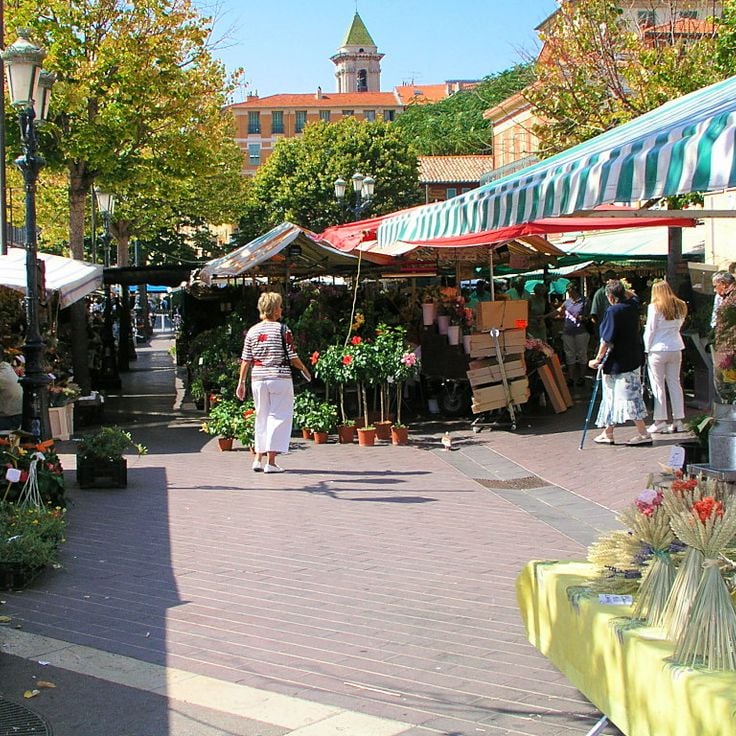
Nice, France
Cours Saleya MarketThe Marché du Cours Saleya is a daily market in Nice's old town that gathers vendors of regional produce each morning. Sellers offer vegetables, fruits, flowers, and local specialties such as socca, pissaladière, and marinated olives under striped awnings. This market extends along Cours Saleya, a street lined with ocher facades from the 18th and 19th centuries, located between Place du Palais and Quai des États-Unis. On Mondays, an antique market takes place here instead.
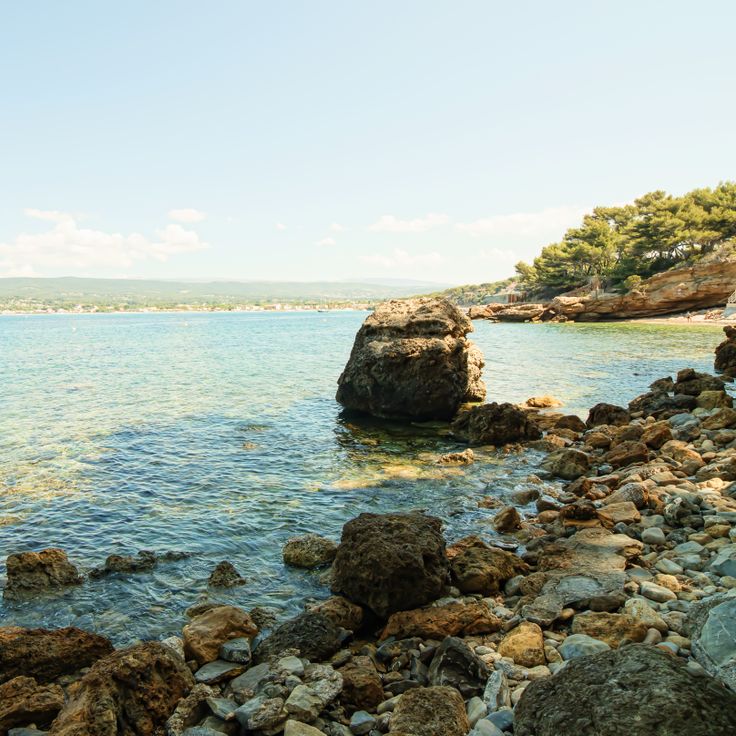
Cap d'Antibes, France
Coastal PathThe coastal trail at Cap d'Antibes extends for about 1.2 miles (2 kilometers) from Garoupe Bay to Villa Eilenroc and runs along the rocky Mediterranean coastline. This stone pathway offers several viewpoints overlooking the sea and passes through Mediterranean vegetation including pines, Aleppo pines, and native shrubs. Along the trail, several small coves with rock formations can be found, suitable for swimming in calm conditions. The path was established in the early 20th century and connects various historic villas and estates of Cap d'Antibes.
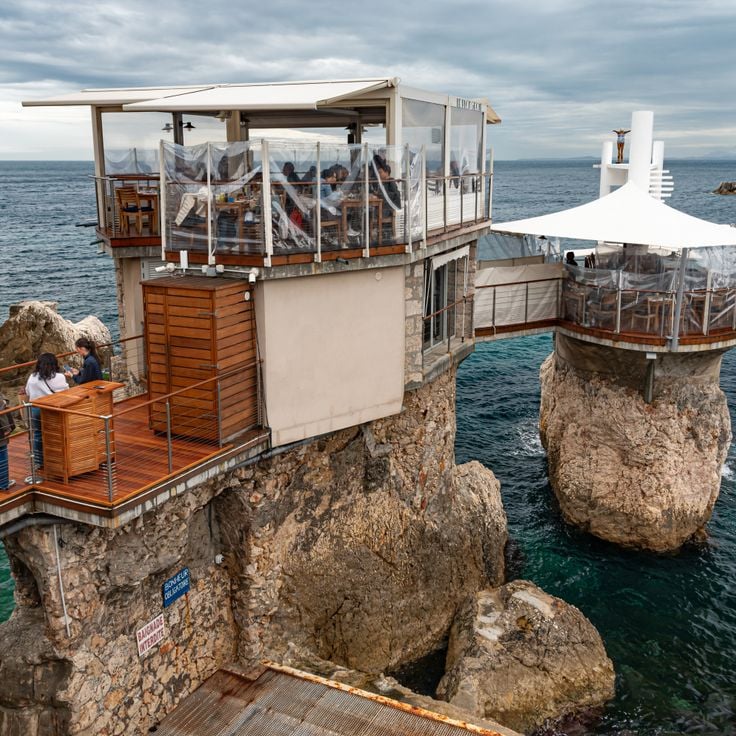
Nice, France
Le PlongeoirThe restaurant Le Plongeoir is located on concrete supports above the Mediterranean Sea at the site of a former 1950s diving platform near the port of Nice. The structure was originally built as a public bathing facility and later converted into a dining establishment. The platform provides views of the sea and the bay. The concrete pillars rise from the water and support the structure, which sits about 10 feet (3 meters) above the sea surface. The facility is visible from the waterfront promenade and accessible by footpath.
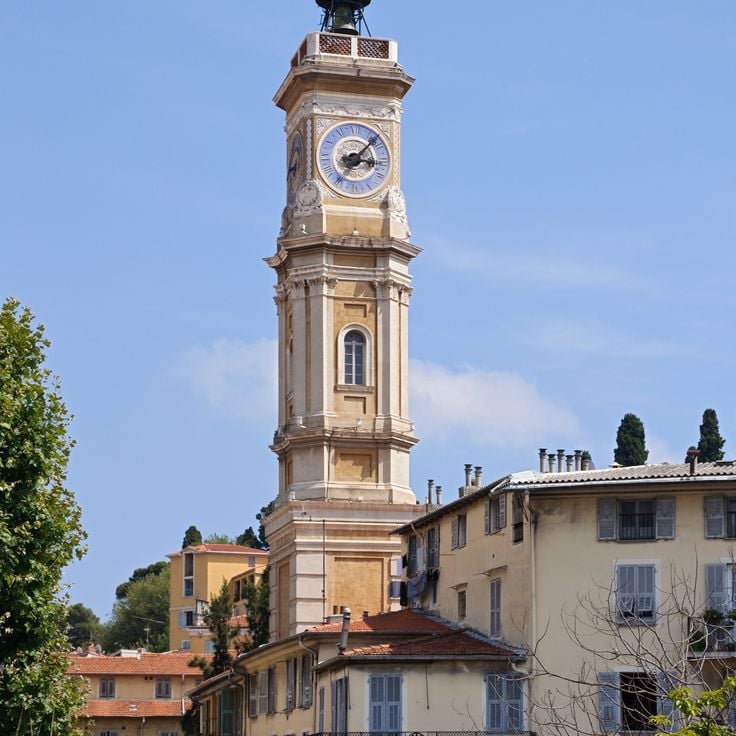
Nice, France
Saint-François TowerThis square bell tower from the 18th century rises in Nice and features an observation platform at 138 feet (42 meters) height, offering views of the harbor and the Mediterranean Sea. The Tour Saint-François belongs to the religious architecture of the city and allows visitors to observe the coastal landscape and urban structure of the Côte d'Azur from an elevated position.
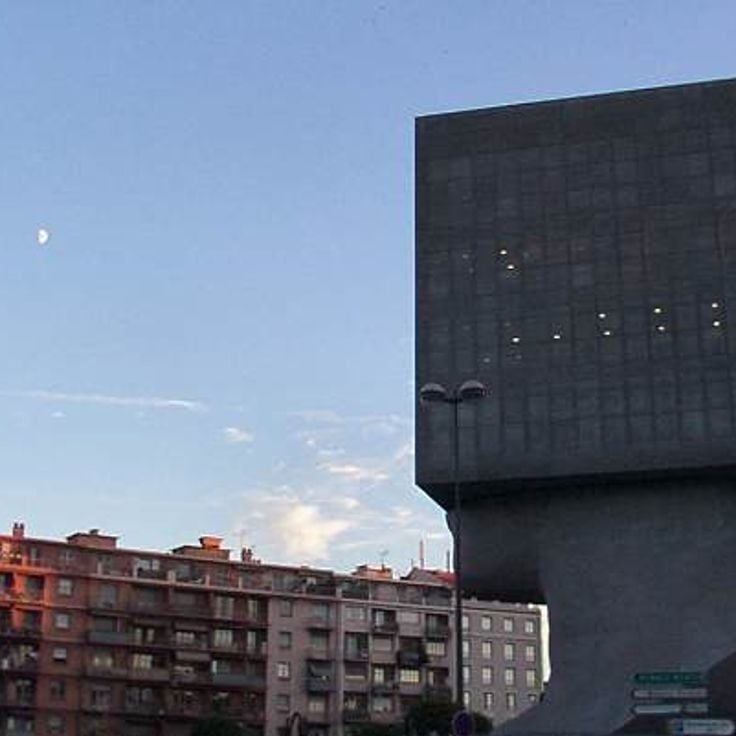
Nice, France
The Square HeadThis seven-story cube shaped like a human head houses the library's administrative offices. La Tête Carrée was designed by Sacha Sosno and François Nürnberger and rises 98 feet (30 meters) above the ground. The aluminum cladding gives the building its characteristic gray surface, while the interior spaces serve as functional offices. This contemporary structure stands near the Palais des Congrès and is among the modern architectural works that have shaped Nice's cityscape since the early 2000s.
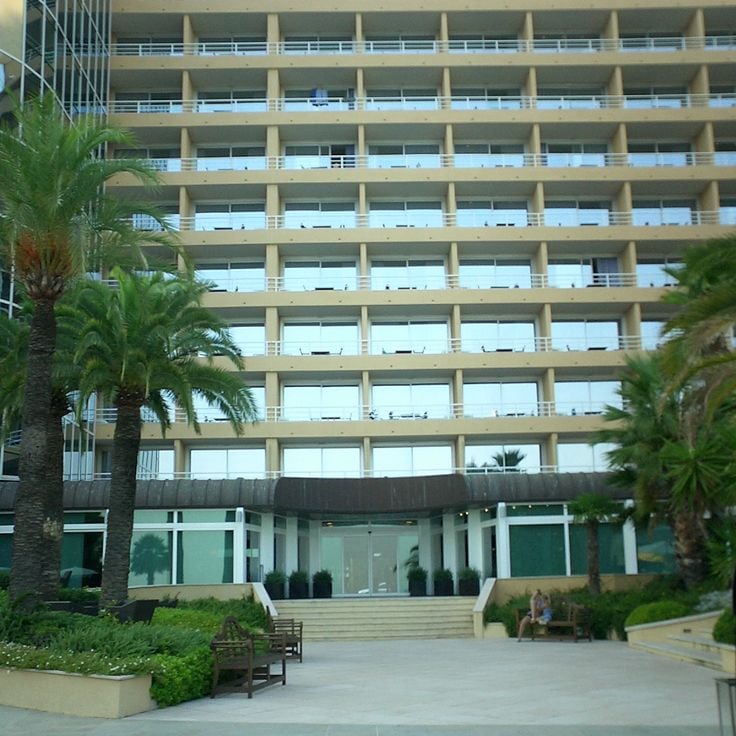
Monte Carlo, Monaco
Meridien Beach PlazaThis beachfront hotel complex features two private bathing platforms extending into the Mediterranean Sea, located 1,300 feet (400 meters) from the Monte Carlo Casino. The property offers direct water access and allows swimmers to enter the sea from the platforms. The location between Larvotto Beach and the Principality of Monaco makes this building an example of coastal hotel architecture from the second half of the 20th century along the French Riviera.
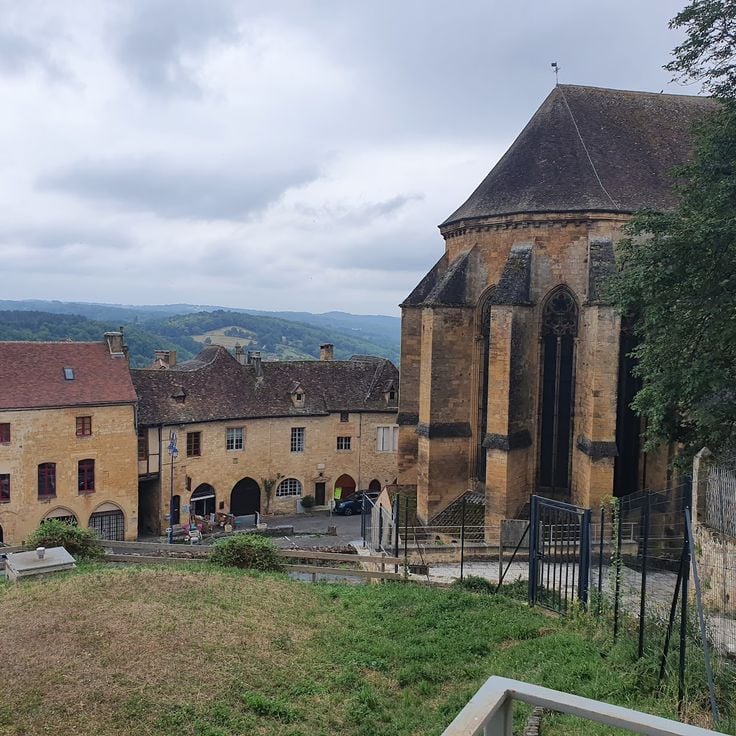
Gourdon, France
Gourdon VillageThe village of Gourdon is a medieval settlement built with local limestone on a rocky promontory rising 2,500 feet (760 meters) above the Loup River and the Caussols plateau. This village between Monaco and Saint-Tropez forms part of the Côte d'Azur's architectural heritage and demonstrates medieval settlement patterns in the region. The stone structures date primarily from this period and showcase the use of regional materials typical of Provence.
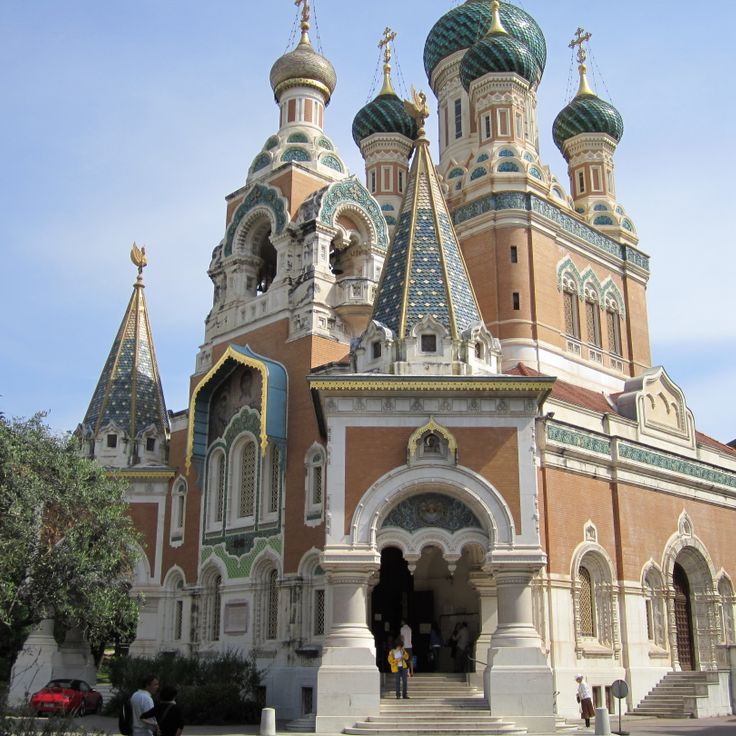
Nice, France
Saint Nicholas Orthodox CathedralThis Russian Orthodox cathedral was built in 1912 and imitates 17th-century Muscovite religious architecture. The building features six copper domes and interiors decorated with marble. The cathedral was named after Saint Nicholas and serves the Orthodox community in Nice.

La Turbie, France
La Turbie MonumentThis Roman monument rises 115 feet (35 meters) above a mountain pass overlooking the Côte d'Azur. Emperor Augustus commissioned its construction in 6 BC to mark the boundary between Italy and Gaul. The preserved columns and architectural fragments attest to the Roman presence at this strategic position between Monaco and the backcountry. From the monument's terrace, the view extends across the Mediterranean Sea and the surrounding mountains.